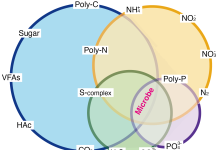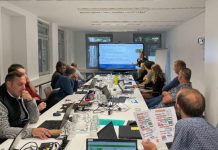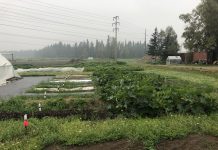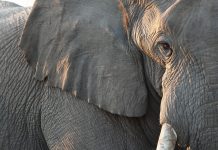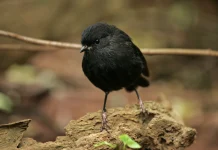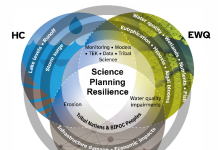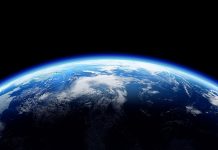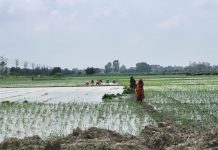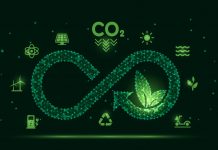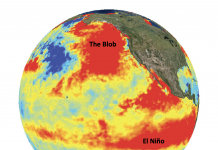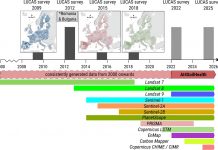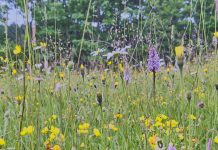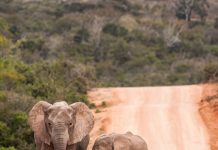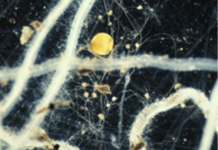Home 2024
Archives
Microbes as high-potential green resource producers
Hui-Ping Chuang, Assistant researcher at the Sustainable Environment Research Laboratories of the National Cheng Kung University, shares insights into the vital role of microbes in waste removal and sustainable resource generation.
Future climate services for resilient cities: The CoKLIMAx lighthouse project
Climate Service Center Germany (GERICS) is exploring future climate services for resilient cities by focusing on the CoKLIMAx lighthouse project.
When common recommendations for cultivating in cold soils inadvertently thaw permafrost
Melissa Ward Jones, details when common recommendations for cultivating in cold soils inadvertently thaw permafrost, starting with the challenges of cultivating at high latitudes.
Analyzing the rhetoric behind trophy hunting narratives
Jens Ulrik Hogh and Stephan Wunderlich from the International Council for Game and Wildlife Conservation (CIC) discuss public perceptions of trophy hunting.
The different facets of biodiversity
Professor F. Guillaume Blanchet from Université de Sherbrooke explores the various aspects of biodiversity and the challenge involved in monitoring it.
Pioneering solutions for sustainable protein production in future
InnoProtein consortium, explain why sustainable protein production is urgently needed and how, with its circular, zero-waste approach, InnoProtein supports this goal.
Global centre for climate change impacts on transboundary waters
Dr. Gail Krantzberg and Dr. Andrew Gronewold, unpack the priorities of the Global Centre for Climate Change Impacts on Transboundary Waters.
An organizing protocol for society’s approach at responding to climate change
Huffington Foundation Professor of Economics and Environmental Studies, Emeritus Gary Yohe argues that adopting an iterative risk management approach is the most effective way when responding to climate change uncertainties.
Bacterial photobiohybrids and photosynthesis: Optimizing energy harvesting with bacterial-semiconductor hybrids
Photosynthesis serves as the primary mechanism for converting solar energy into chemical energy and plays a pivotal role in regulating atmospheric oxygen levels and carbon dioxide concentrations, influencing global climate patterns as a result.
Innovative climate research for guiding policy-making
Professor Phoebe Koundouri leads AE4RIA and UN SDSN Global Climate Hub, participating in innovative climate research impact projects.
Pavitra Ganga successfully demonstrates robust and low-energy wastewater technologies in India
Paul Campling is the coordinator and Anshuman is the scientific coordinator of the EU-India Horizon 2020 project Pavitra Ganga that ran from 2019 until the beginning of this year. This research and innovation project brought European and Indian partners together to collaborate on tackling wastewater treatment challenges and to unlock some of the resource recovery opportunities.
ARCHIMEDES Project ensures extended ECS lifetime
Reiner John, Coordinator Research Funding Corporate Strategy at AVL List, examines how the ARCHIMEDES project ensures an extended ECS lifetime with digital means and fosters a circular economy.
Seabirds and humpback whales give early warning to marine heatwaves
Lauren Bien from Prince William Sound Science Center and Mayumi Arimitsu from USGS, Alaska Science Center and additional contributors, John Moran and Rob Suryan, Alaska Fisheries Science Center explain how seabirds and humpback whales provide early warning signals during extreme marine heatwaves.
Soil health monitoring through iterative analysis of soil’s past, present, and future
Tom Hengl, Director of the OpenGeoHub foundation, discusses the importance of soil health monitoring and how the AI4SoilHealth project is supporting this endeavor.
The critical role of governments in benefit sharing
Dominic Muyldermans and Frank Michiels outline the key role governments can play in making a new multilateral mechanism for benefit sharing a success.
Conserving elephant populations: Not without consultation
Global North and South when it comes to conservation, human rights and climate protection, particularly concerning elephant populations.
Building a sustainable, high-impact, and ‘living’ biobank infrastructure in Canada
A living biobank can generate new insights about our care; Francois Lamontagne, Paul Hebert, and Michelle Kho tell us more.
EURO-CORDEX: A community effort provides the basis for regional climate adaptation in Europe
Climate change is a worldwide threat to humanity and to human activities. Especially in the densely populated continent of Europe, targeted adaptation to the man-made changes in climate is necessary.
Electric-field nanobubbles: Re-engineering water treatment
Niall J. English, from the University College Dublin, School of Chemical and Bioprocess Engineering, discusses electric-field generated nanobubbles, including re-engineering water treatment – and beyond.
Soil health: A role for arbuscular mycorrhizas
Lynette Abbott from The University of Western Australia, focuses on soil health again, this time examining the role of arbuscular mycorrhizas.


